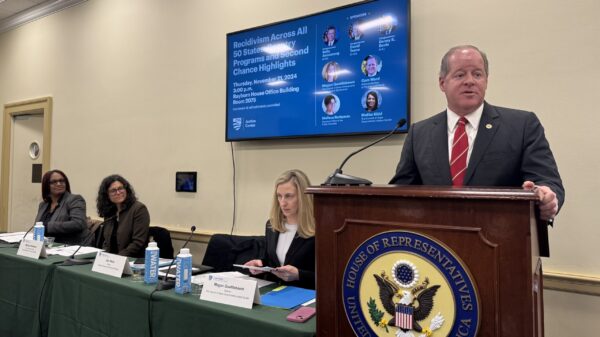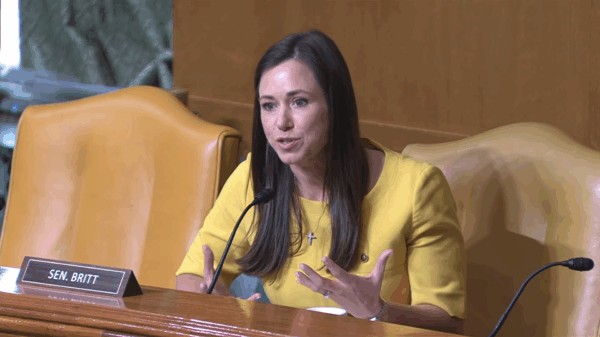Hi, what are you looking for?
- Elections

Attorney General Marshall announces campaign to fill Tuberville’s Senate seat

Rep. Dale Strong declines Senate run, seeks House reelection

Meet the former executive, entrepreneur running for Tuberville’s Senate seat

Alabama House Majority Leader endorses Tuberville for governor

Sen. Tommy Tuberville announces run for governor in 2026
- Governor

Sen. Tuberville centers Trump in his gubernatorial campaign

Gov. Ivey shares statement on the 2025 Regular Session ending

Alabama Bureau of Pardons and Paroles officers officially recognized as law enforcement

Gov. Ivey signs House Bill 202 and House Bill 199

Gov. Ivey signs “Powering Growth” plan into law
- Legislature

Opinion | Alabama’s GOP budget chairs lead state to fiscal strength

A look at the 2025 session’s impacts on mental healthcare

Alabama passes 12-bill package to strengthen military support, jobs, bases

The impact of Alabama’s new hemp and CBD restrictions

Gov. Ivey signs bill protecting physician-patient communication
- Economy

Alabama home sales dip slightly in April but outpace last year

Opinion | A cakewalk for lawmakers, a crackdown on workers, businesses

Poll: Trump voters back vape access, reject Biden rules, as Alabama ban sparks backlash

Third Alabama Starbucks votes to unionize in Huntsville

Gov. Ivey salutes Alabama exporters with Trade Excellence Awards
- National

Report: Huntsville was the clear choice for Space Command – again and again

Sen. Britt emphasizes child care issues in hearing with labor secretary

Sen. Britt reviews Birmingham Northern Beltline progress, economic impact

Sen. Britt sponsors bill to boost American-made cotton

AG Marshall: Louisiana SCOTUS case could “absolutely have an impact” on Alabama
- Education

Brasfield & Gorrie to build Alabama School of Healthcare Sciences campus

ALFA awards new vehicle to Alabama’s 2025-26 Teacher of the Year

Alabama Library Association slams APLS board’s “dismissive” tone

Moms for Liberty calls for APLS board to help get librarians fired

Kathy Murphy named new president of Wallace Community College in Dothan
- Health

Britt reintroduces the MOMS Act

Opinion | Opioid plan positions Alabama to curb addiction, support recovery for veterans

Opinion | Alabama’s rural hospital crisis is a threat to health — and our economy

Key federal workplace safety offices in Alabama marked for lease termination

Alabama Senate passes bill loosening regulations for religious vaccine exemptions
- Opinion

Opinion | How about we just follow the law?

Opinion | No Oracle foresaw it: Tuberville echoes Alabama’s earliest governors

Opinion | A Memorial Day message fit for a king

Opinion | Memorial Day demands more than memory — it calls us to national character

Opinion | The real economic killer in Alabama? Moral politics, not the market
For the past three years, the Alabama Department of Public Health (ADPH) has provided access to COVID-19 data. The federal COVID-19 public health emergency expired on May 11, 2023, and with that expiration, much of the data is no longer available. Our dashboard has been modified to remove temporal data that has become outdated. Historical archived data, such as cases and deaths over time, will remain available for now.
THIS DATA IS AS OF
0
0
0
0
0
Tracking vaccine distribution
Vaccine data is from the Centers for Disease Control and Prevention, except where specified otherwise, and may differ from data provided by the Alabama Department of Public Health.
Notes and FAQs
Different trackers have different cut-off times and tracking methods, so daily case totals may be slightly different. There are three main tracking methods for Alabama’s case data. (1) Cases by date of infectiousness, (2) cases by date reported to ADPH, and (3) a raw tracking of the cumulative case count.
For most of the pandemic, through the summer of 2021, APR’s dashboard relied on the third method (3), meaning that our dashboard captured the cumulative case count (the total number of cases since March 2020) for each day as publicly posted on ADPH’s data portal. The previous day’s cumulative case count was then subtracted from the current day’s count to arrive at a daily increase. For example, the cumulative case count on Jan. 17, 2021, was 422,598. The count on Jan. 18, 2021, was 424,028. Therefore, the case increase on Jan. 18 was listed as 1,430. Other than some ad hoc accounting for backlogs, the data isn’t revised later.
The second method (2) is similar except that it relies on internal counts provided by the Alabama Department of Public Health. The “date reported” represents when the case was reported to ADPH by a health care provider. If ADPH receives 5,000 case reports on a day, that day’s case increase will be listed as 5,000, regardless of when the case actually occurred. Counts are typically very close to the first method (1), except for some fluctuation caused by delays. ADPH doesn’t adjust this data when backlogs are reported, so some dates have data anomalies caused by that.
The first method (1) tracks cases by the date the case occurred — in other words, when the case became infectious or ill. This count differs from the “date reported” because there are sometimes delays or backlogs between when a case occurs and when a provider reports that case to ADPH. There have been instances throughout the pandemic when labs and other providers have neglected to report cases immediately. For instance, a single lab could report 5,000 cases on Dec. 15. Once inspected, it’s determined those cases occurred in October and November. ADPH will backdate each case to the date it occurred. This method accounts for backlogs better than that second (2) and third (3). However, this method has lag. Data for the last two weeks — and occasionally longer — are often incomplete because of the time it takes providers to report cases to ADPH and for ADPH to determine and record the date of occurence. That’s why on the daily case count chart of cases by date of infectiousness, it frequently looks as if the daily case counts for the last few days have taken a sudden dive. That is usually because the data is incomplete. As time goes on, ADPH receives more reports and updates daily numbers, and the numbers are typically revised upward.
The same three methods are used for deaths as well, i.e. deaths by actual date of death, deaths by date of report, and a raw tracking of the cumulative death count.
ADPH uses the first method (1) for monitoring COVID-19 cases and trends as it is a more accurate representation of disease transmission levels in the community than the second method (2). Beginning in July and August of 2021, APR removed method three (3) from our dashboard. Now, we rely on the data provided by ADPH and provide both method one (1) and method two (2) tracking in several categories. However, we still perform other calculations on our own based on ADPH’s data.
We update our data shortly after the Alabama Department of Public Health releases new COVID-19 data. Beginning in July 2022, ADPH moved to only updating data once per week, which means that APR’s data dashboard will only update once per week. Hospitalization data and vaccination data provided by the CDC may update more frequently, but the CDC is also currently only updating publicly available data once per week.
Email coviddashboard@alreporter.com if you have a question or concern about the dashboard. We will do our best to respond, though we may not be able to respond to everyone.

